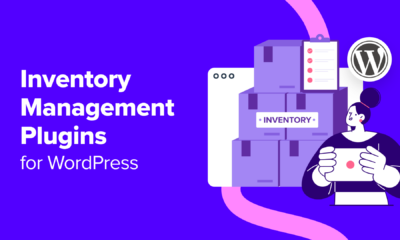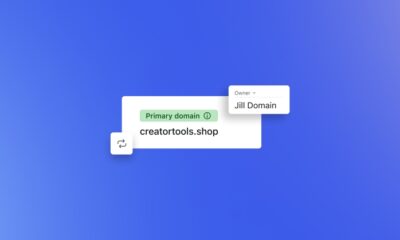There is a very special name for stuff before it is sold: inventory.
Online retailers want to have enough inventory to meet demand. Having too much is bad, since you must pay to store it, plus there is an opportunity cost in lost sales. Having too little is bad, because it’s hard to deliver instant gratification if you lack the item the consumer desires and that sale is lost.
When COVID-19 happened, manufacturing, shipping and storage all became wild and unpredictable.
Those factors are intertwined and impact each other. Digital marketers and online retailers must sort through this thicket, all the while being wary of the next unpredictable event.
Just how will they do that?
Read next: How logistics and the supply chain impact customer experience
Before and after
The world used to run on “just in time” inventory. Merchandise at rest is a cost, minimized if the stuff sells shortly after it arrives at the warehouse or fulfillment center. Supply chains were taut throughout the system, from parts to manufacturer, from manufacturer to shipping, from shipping to seller, from seller to customer. Merchandise spent more time in motion than at rest.
Just in time inventory still exists…sort of. “There are still companies with [such] predictable supply and demand profiles that just-in-time still works,” said Mark Hart, Chief Operating Officer of Pollen Returns, a pick-up service for e-commerce businesses.
But as companies migrated to online sales, the weaknesses of just-in-time inventory were exposed. Parts could not get to factories. Sometimes factories closed. Finished goods could not always ship. Warehouses might have that item or might not. “There is a running joke that companies are migrated from just-in-time to just-in-case,” Hart said.
So how do online merchants react when their supply chains snap?
One quick fix is to throw money at the problem, basically spending more on air cargo and shipping, explained Matt Garfield is a Managing Director in FTI Consulting’s retail and consumer products practice (FTI is a global business advisory firm). That can still leave vendors waiting for the goods to arrive while staring at empty shelves.
Or they can go big on just-in-case, but “retailers may have swung the pendulum too far,” Garfield said. Merchants report excess inventory — and undertaking promotions to clear it. “Going forward, we expect to see retailers adjust their inventory models to bridge the divide between JIT inventory and current inventory models. Key focus should be ensuring higher holdings of high velocity, common products while reducing holdings (and potentially introducing sales risk) for lower velocity products.”
“Nearly all of the clients we work with are going through a supply chain review, looking for risks, trying to find alternative or additional suppliers,” said Russ Sharer, Chief Sales Officer for the Brooks Group, a sales training and leadership consultancy. While some clients will hold more inventory, “most will qualify additional suppliers…and balance the business between them as a primary risk strategy. As we are seeing today with large retailers, holding inventory is risky if buyer’s tastes change.”
Read next: Our interview with Pollen’s founder, Spencer Kieboom
Use data, not a crystal ball
Online retailers can’t rely on a fortune teller peering into a crystal ball to get inventory right. But
brands have a lot of data to analyze that can aid forecasting. For big companies, this is not usually a problem. Seasonal demand is easy to predict — Christmas and the holidays, back to school, and so on. Beyond that, you need a different approach.
“I’d say that 70-80% of overall revenue can be modeled well.” Sharer said. “The remaining is either too new or has too unpredictable demand. In my experience, it’s a lot easier for companies to model for smooth demand than for peaks and valleys.”
Hart offered a more pro-active approach: Online retailers must take a position on what they want to sell. Basically, an online retailer uses technology to create a demand for specific items, a strategy that ideally makes demand more predictable.
“’What if’ analyses have been a frequent tool for retailers to plan for potential scenarios (both upside and downside) and quantify the impact to inventory holdings.” Garfield said. But you can “only test for scenarios developed or envisioned by the retailer (typically percentage increases/decreases in demand or supply).”
Read next: The Brooks Group on building customer trust while the supply chain is in crisis
Get the daily newsletter digital marketers rely on.
“Forecasting demand is rarely 100% accurate, but there are steps you can take to get your estimates closer to actuals,” said Casey Armstrong, CMO of ShipBob, a third-party logistics firm. Look at historical data and seasonality. Think through planned promotions and anticipated spikes. Optimize stock levels by tracking fast-selling vs. slow-moving items. Decide how much of each SKU to reorder and when.
Merchandisers and marketers do “finger in the air” forecasting, expecting an item to sell when in fact it may not move at all, noted Dave Emerson, SVP for global e-commerce at global freight and delivery firm Sekologistics. “No one gets fired,” Emerson said. “It’s the cost of doing business.”
Emerson recalls one client who got it wrong. They were paying $400,000 per month to warehouse goods that did not move at all — for eight months. “During the pandemic, they took a punt,” he said. Which leads to the psychology of inventory. It’s like a comfort blanket.
“You can put your arm around it to make sure that it’s there. But that costs money,” he said. There must be a better way. It is one thing to take comfort from having inventory. It is another to know when to get the goods — and being able to sell through.
This is the first part of a two-part article.



















You must be logged in to post a comment Login